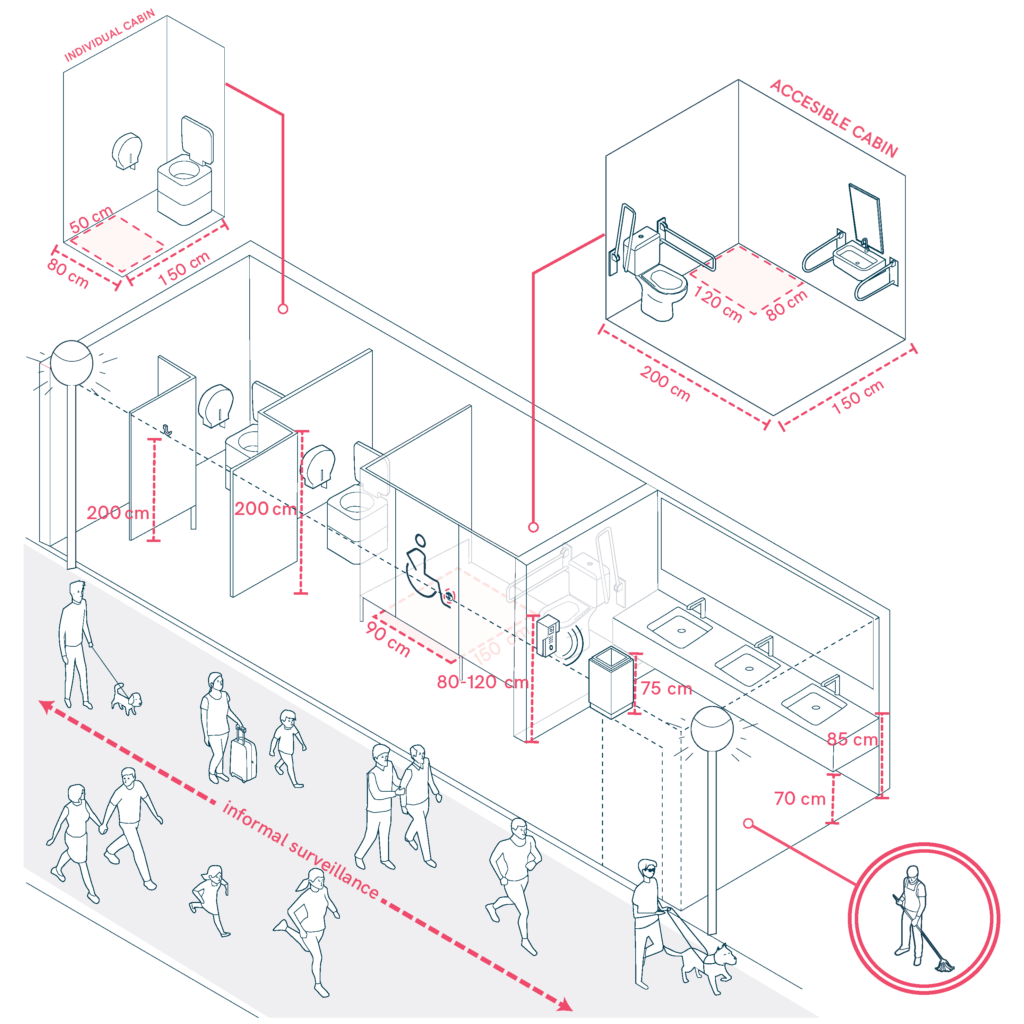Restrooms in Mobility Hubs
Ensuring that restrooms in train stations, bus terminals, airports, and ferry ports are accessible and comfortable is essential for all travelers. These spaces should allow barrier-free access, provide enough room for luggage, and facilitate child supervision. Additionally, they should be strategically located near boarding and arrival areas for greater convenience. Implementing these principles enhances the passenger experience and promotes a more inclusive environment.

- Ensure that restrooms are located on the main level of the terminal without the need to use stairs.
- Provide accessible ramps or elevators in cases where level changes are unavoidable.
- Install restrooms near boarding and arrival gates for immediate access.
- Clear and internationally recognizable signage to guide passengers.
- Ensure the availability of adapted restrooms with support bars, sufficient space, and emergency alert systems.
- Consider automatic door-opening restrooms for people with reduced mobility.
- Spacious cubicles to accommodate luggage, baby strollers, or wheelchairs.
- Family-friendly spaces with enough room for an adult to supervise a child.
- Hooks and shelves inside cubicles for bags and personal belongings.
- Adequate lighting and staff presence for assistance if needed.
- Frequent cleaning to ensure hygiene and comfort.
Sources
- https://accessible-eu-centre.ec.europa.eu/content-corner/digital-library/en-172102021-accessibility-and-usability-built-environment-functional-requirements_en
- https://www.iso.org/standard/71860.html
- https://www.t-l.ch/collectivites/guide-des-amenagements-pour-les-transports-publics-routiers-tl/
- https://www.leitfadenbarrierefreiesbauen.de/fileadmin/downloads/archiv/barrierefreies_bauen_leitfaden_en_bf_version2.pdf
- https://www.vitoria-gasteiz.org/http/wb021/contenidosEstaticos/especial/cea/20190917/Avance_PMSEP_2020_2030.pdf
- https://www.punt6.org/es/books/espacios-para-la-vida-cotidiana/
- Carers
- Children
- Cognitive
- Cognitive abilities
- Decolonial perspective
- Digital
- Digital barrier
- Enviroment
- Environmental
- Gender and generations
- Gender perspective
- Hearing impairment
- Low-education
- Low-income
- Older people
- Other
- Physical abilities and features
- Sensory and Physical
- Socioeconomic
- Visual impairment